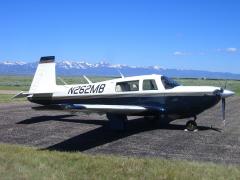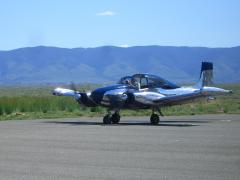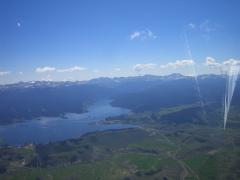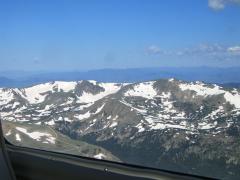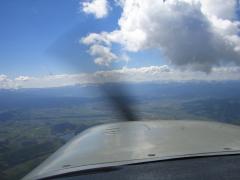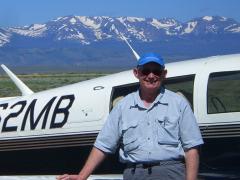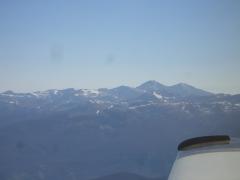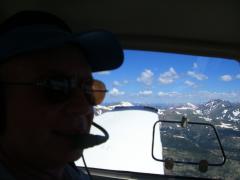-
Posts
267 -
Joined
-
Last visited
Content Type
Profiles
Forums
Blogs
Gallery
Downloads
Events
Store
Everything posted by FlyingAggie
-
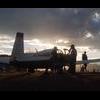
Good candidate for mysignature picture
FlyingAggie posted a gallery image in Old MooneySpace.com Images
From the album: Walden, CO Fly-In
-

Temco Riley Rocket (a.k.a. Twin Navion)
FlyingAggie posted a gallery image in Old MooneySpace.com Images
From the album: Walden, CO Fly-In
-
From the album: Walden, CO Fly-In
-
From the album: Walden, CO Fly-In
-

Still lots of snow for the end of June
FlyingAggie posted a gallery image in Old MooneySpace.com Images
From the album: Walden, CO Fly-In
-
From the album: Walden, CO Fly-In
-
From the album: Walden, CO Fly-In
-
From the album: Walden, CO Fly-In
-
From the album: Walden, CO Fly-In
-
From the album: Walden, CO Fly-In
-
You just missed the Colorado Pilot Association Mountain Flying Ground School by a couple of weeks. The next session will be held August 7th. CPA Mountain Flying Course However you can accomplish the same thing by working with a CPA Approved Mountain Flying Instructor. CPA Approved Mountain Flying Instructors I would recommend Cleon Biter. Cleon is not only a CPA Approved Mountain Flying Instructor, but formerly taught the MAPA Safety Foundation Pilot Proficency Course, so he knows Mooney's. He is with AirWest Flight Center at Longmont, which is about a ten minute flight from BJC. Airwest's phone number is 303-776-6266. I PM'd you Cleon's email address and cell number. I used him for my M20K transition training and will be doing my IR with him. Alan Quote: ILXLR8 I am doing some work, for a month or so, in the Denver area. I have arrived at BJC with my good friend Papa Zulu and would like to get proper mountain training while I am here. A instructor source would be appreciated!
-
It not just the cost of the turbo. It is the effect of the higher temperatures on cylinder life and other components and of course maintaining 6 cyl on the TCM TSIO360 vs 4 cyl on the Lyc IO360. Pretty routnine that many TSIO360 need a top overhaul around 1,000 hrs whereas IO360 usually make TBO. Also some TSIO360 don't operate well LOP, however mine does. YMMV. It all depends on the specifics of your mission, operating environment and the depths of your pockets. Alan Quote: 231BB I can't understand the thing about the higher cost of a turbo. Everyone seems to repeat that like a mantra. With an 1800 TBO, you may have to rebuild the turbo once, and maybe a section or two of exhaust. Perhaps $3000 to $4000, less if you're partaking in the maintenance. But if you're flying even 100hrs/year, which for most GA pilots is a lot now, that expense is spread out over 18 years! Your fuel burn alone would cost you over $5K annually (12 gph @$4.50/gal, less if LOP at 9 gph) - this is what we should focus on. If so, then you'll realize the M20K is probably the most efficient 4-seat piston aircraft in the GA fleet. With the added utilities of cruising high altitude operatins, speed, and the best MPG on the market, why would anyone not want a turbo'd Mooney?
-

Working on my Interior...
FlyingAggie replied to Parker_Woodruff's topic in Modern Mooney Discussion
Parker, What will it cost to have them installed? Are you doing it in conjunction with a repaint? Alan Quote: Parker_Woodruff So I decided to help out my local economy today and got the round window door/window panels ordered from Mooney for $300/side. Hoping to have a functional aircraft at the start of July just in time for a visit to St. Louis. We'll see... -

AOG @ ABQ -- Gear retraction failure M20K
FlyingAggie replied to hemme's topic in Modern Mooney Discussion
Dan, Welcome to MooneySpace and the M20K club. Where is your home drome? It is actually on the pre-take-off checklist in the manual, but easy to overlook. Glad you were able to find the solution. I hope you enjoy your K as much as I am enjoying mine. Alan Quote: hemme Postscript: Yes, it was the emergency gear lever being out of place that caused the gear retration and circuit failure. Motor and switch all function correctly when in the proper place (go figure!). I now have another thing to add to the preflight checklist. Trip home was uneventful and if we only had the proper quick-disconnects for the ox system we would have made better time with greater altitude. Many thanks for the information--you saved me a trip to the maintenance shop--and for that, I am very grateful. Dan -
Conratulation Phil! You'll have lots of goodtime ahead.
-
The center post is Stainless Steel in my 1982 K.
-
Agassi70, Welcome to MooneySpace! The turbo charged mid-body Mooney (231, 252 or Encore) will be about 10-15 knots faster than a 201, but only above 10K'. The turbo charged version will cost you more to maintain and will burn more fuel. They typically have lower useful loads and require more attention to engine management. Whether it is worth it, depends on you particular mission and operating environment: How often do you operate from high density altitude airports? How much useful load do you need to meet your mission? How many of your trips are longer than 300 nm? Do you mind wearing oxygen cannulas or masks? The mid-body turbo charged Mooney's improved over time. The first 231's came with TCM TSIO360-GB engines, which suffered several problems. The early 231's have been cited as being a very high pilot work load a/c. Most of the -GB engines have been changed out to the -LB version and many of those have been equipped with after-market intercoolers and automatic wastegates, which many claim lower the pilot workload. The 252's were equipped with the -MB engine which came with OEM intercooler and automatic wastegate. The 252 is often cited as the "best" model Mooney ever made. The last of the mid-body turbo Mooney's was the Encore with a 220hp TSIO360-SB engine and a gross weight increase. Few were made and they are most sought after and are expensive and hard to find. You may also find Lycoming powered F-models and 201's equipped with after market turbo chargers. Ken Reed will probably be along an tell you about the simplicity of his turbo normalized F. Two types of turbo charging have been fitted to 201's. The first was the "Turbo Bullet" STC, where low compression pistons were installed into the Lycoming IO360, but they had to subquently limit the max operating MP due to a fatal crash and is probably a scheme I would stay away from. A latter STC is the M20-Turbos turbo normalized scheme, which is operates at sea level pressures, but is costly to add to a J. I leave it to others to speak of the virtues of the NA Mooney models. Quote: agassi70 I am looking at buying a 201. What is the speed difference between the turbo and non-turbo? Is it worth it? Looking at a 1977 or newer... What mods should I look for? What should I stay away from? Thanks...
-

What's your Useful Load?
FlyingAggie replied to scottfromiowa's topic in Vintage Mooneys (pre-J models)
My 262 comes in at 892 lbs of useful load. My problem is the forward CG. I thought Mooney's were pretty much immune to CG issues, unlike Bo's, but I have to watch the forward CG with two adults in front. I am currently carrying a 60 lbs sand bag plus other junk at the back of the cargo compartment to stay within the forward limit. I need to find out about installing the 19lb ballast in the tail. Not sure that any of the previous owner really worried about it, but my Mooney instructor is a real stickler for the operating limits and he had the same problem with his 252/Rocket. I want to rework through all the equipment lists and double check the accounting of the 28 previous years of changes. I have been told to never have an old airplane re-weighed, you want like the result. -
When Don Kaye delivered my plane to me 7 weeks ago, N262MB saw a GS of 235 knots at 17K' with 70% power. http://flightaware.com/live/flight/N262MB/history/20100316/1230Z/KSJC/KMLF/tracklog.
-
I achieved a major flying milestone today: My instructor signed off on both complex and high performance endorsements and turned me loose to fly my new Mooney all by myself. I flew 1.1 hrs and loved every minute of it.
-
I am confused by the JPI engine monitor in my Mooney. I thought it was the ubiquitious JPI 700, but now I am not sure if I actually have a JPI 700. The POH Supplement list the device as a JPI EGT 701. It looks like a 700 and has some of the functions of a JPI 700. In step mode it steps thu oil temp, OAT, BAT Voltage, EGT & CHT for each cyl and TiT. It has a ROP Lean Find mode and a normalized mode. I didn't know how to put it in LOP Lean Find mode, but that mode is not mentioned in the POH Supplement. I will try that next time I fly. It does have a setup mode where you can program various alarms. It was installed in 1992. I haven't been able to find any listing for JPI EGT 701 on the JPI site, so is the JPI EGT 701 a JPI 700? Alan
-

LOP Power Formula for TCM TSIO360 Engine?
FlyingAggie replied to FlyingAggie's topic in Modern Mooney Discussion
Scott, That is the equation that Cleon had me use this morning in figurung power settings. We played with different power settings at 10K'. We seemed to have trouble operating LOP at 65% which would be about 10GPH, but at that setting the TiT would exceed 1600 dF. We also had trouble with using the JPI's "Lean Find" mode. Either we are misunderstanding what is supposed to happen or the JPI 701 is not working right. Do you know of any tutorials on using the JPI Lean Find mode to setup LOP. Today was a lots of fun. I flew twice and racked up another 3.5 hrs of Mooney time. The landings really started coming together. This afternoon we took the 262 up to 13,500' and did an emergency decent down to 10,000. It was gear down, speed brakes out, prop forward and bank at 45 deg and hold 132 knots. We fell like a rock: 3500'in 30 seconds! That 7000'/min!!!! It made my ears hurt, but good to know if I am at 24,000 feet and my oxygen fails, I can get down before passing out. We also worked on go arounds and emergency landings. Cleon pulled the power to idle at TPA and had me land to with no power. We also experimented with how you can extend the glide by pulling the prop all the way back. You can definitely feel the acceleration or deceleration. So I now have 12.4 hrs in my Mooney! Quote: KSMooniac Alan, it should be 13.7 * FF for your engine, so your 8.5 GPH setting = 55%. For your next experiment, you might want to set up in "hi cruise" at a relatively high MP and 2400 or 2500 RPM, and then smoothly and quickly pull back to 11.5 GPH (75%) and see how that works. Once it is stabilized there, you might enrichen slowly until you hit peak, and see how far LOP you were at 11.5 GPH and go back to 11.5 GPH. You don't want to linger at peak for very long...just enough to find a reference point. Hopefully you'll be in the 40-50 dF LOP range at 11.5 GPH. Record your CHTs at that setting and compare them to whatever the book says for 75% ROP at 100 dF ROP. -

LOP Power Formula for TCM TSIO360 Engine?
FlyingAggie replied to FlyingAggie's topic in Modern Mooney Discussion
The a/c is equipped with a JPI 700. We have been running about 100 df ROP, but were just comparing 50 ROP to 50 LOP fuel flows. I have been using a 65% power setting (24", 2500 RPM). Yes, taking the APS course is high on my list. Quote: ehscott I have the number at home with my notes to the APS seminar and will send it along. Just out of curiosity, how did you find LOP? Do you have a JPI 700 or comparable? On another note, running 50 dF ROP is pretty close to the worst power setting in terms of CHT and internal cylinder pressure (ICP) unless you are running at 65% or lower power setting. I have a 1986 252 with OEM injectors and have not been able to get it to run smoothly LOP so when I am flying at greater than 65% power I run 100 dF ROP. Not sure if you have taken or considered taking the APS seminar on engine management but I highly recommend it. I learned a lot about engine management. -
Today we experimented with operating my "new" Mooney 262 LOP. My instructor was impressed with how smooth the engine ran LOP. It seemed to run smoother LOP than ROP. The a/c is equipped with GAMI's. At 50 degress ROP the fuel flow is about 11 gph, but at 50 degrees LOP the ff drops to about 8.5 gph. I know for the Lyc IO360, the formula for amount of power is P(hp) = 14.9*FF(gph). Does anyone know the power formula for the TCM TSIO360? I am now 8 hrs into my Mooney transition training, but feel I have only scratched the surface.
-

New Paint Finally Finished!!!
FlyingAggie replied to flight2000's topic in Vintage Mooneys (pre-J models)
Outstanding. She should turns heads where ever you go. How did you get by with the small N-number? I was under the impression that if you repainted you had to go back with the large numbers.


